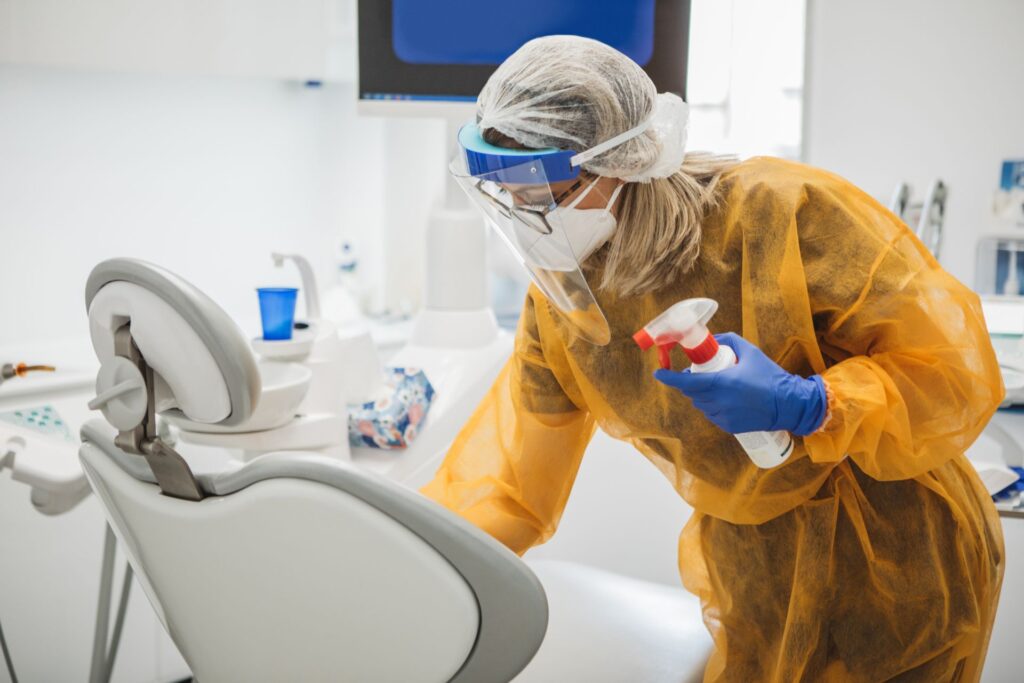Top 5 infection control standard precautions
In the pest control industry, it is crucial to take necessary infection control standard precautions to minimize the risk of exposure to pests, associated pathogens, and chemicals that are used during the treatment process. These precautions ensure the safety of pest control professionals and the general public.
Below are the top 5 infection control standard precautions commonly used in the pest control industry.
Personal Protective Equipment (PPE)
Personal Protective Equipment (PPE) is a crucial infection control and standard precaution in the pest control industry. PPE includes gloves, respirators, and protective clothing that minimize exposure to pests and their associated pathogens. Pest control professionals must wear appropriate PPE to avoid contact with pests and prevent the transmission of germs.
Gloves are essential PPE for pest control professionals. They provide a protective barrier between the professional’s hands and pests or contaminated surfaces. Respirators protect the respiratory system from inhaling pest-related particles. Protective clothing covers the skin and clothes, preventing contact with pests and contaminated surfaces.
Proper Hand Hygiene
Frequent hand hygiene is another essential infection control standard precaution in the pest control industry. Pest control professionals should wash their hands frequently with soap and water or use an alcohol-based hand sanitizer to prevent the transmission of germs. Proper hand hygiene ensures that the professional’s hands are clean and free of germs that can spread to other surfaces.
Environmental Cleaning and Disinfection
Regular cleaning and disinfection of surfaces and equipment that come into contact with pests are crucial to prevent the spread of pathogens. Pest control professionals should use proper cleaning and disinfection products to eliminate germs from contaminated surfaces. Environmental cleaning and disinfection minimize the risk of pest-related diseases and ensure a safe environment for pest control professionals and the general public.
Pest Identification and Assessment
Pest identification and assessment are crucial infection control standard precautions in the pest control industry. Pest control professionals must identify the type of pest, its habitat, and risks and assess the extent of infestation to determine the appropriate control measures. This process helps determine the most effective and safest method of controlling the pest and minimizing the risk of exposure to pathogens.
Integrated Pest Management (IPM) Strategy
Integrated Pest Management (IPM) is an effective infection control standard precaution in the pest control industry. IPM involves using strategies such as sanitation, exclusion, traps, and pesticides to control pests, reduce the risk of exposure to pathogens, and minimize the use of pesticides. This approach ensures that the pest control professional uses the most effective and least hazardous control methods while minimizing the risk of exposure to pests and their associated pathogens.
Honourable mention of disposal of pests and pesticides
Proper disposal of pests and pesticides is important to prevent harm to the environment, human health, and other animals. Improper disposal of pesticides can lead to contamination of soil, water, and air, which can have long-lasting and damaging effects on ecosystems. Additionally, pests and their carcasses can attract other pests and lead to the spread of diseases. Proper disposal through certified waste management facilities or by following specific guidelines can help minimize these risks and protect the environment and public health.
Conclusion
Infection control standard precautions in the pest control industry are crucial for protecting the health and safety of pest control professionals and the public. Personal Protective Equipment (PPE), proper hand hygiene, environmental cleaning and disinfection, pest identification and assessment, and Integrated Pest Management (IPM) are the top 5 infection control standard precautions pest control professionals use to minimize the risk of exposure to pests and associated pathogens. By following these precautions, pest control professionals can safely and effectively control pests while ensuring a safe environment for everyone.

